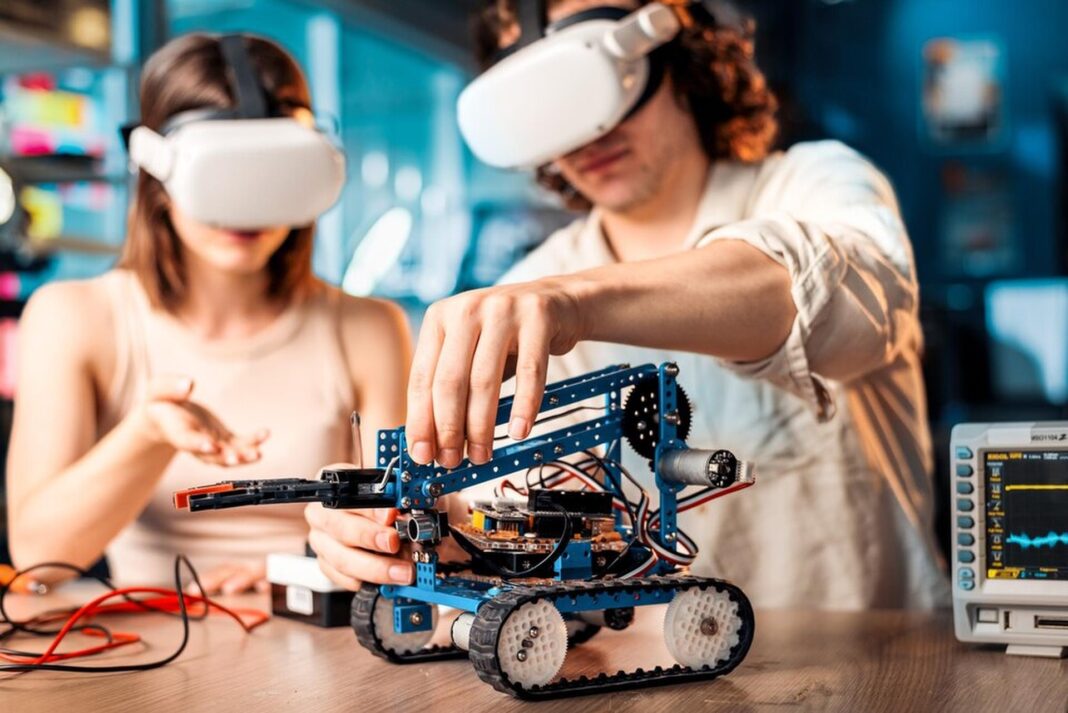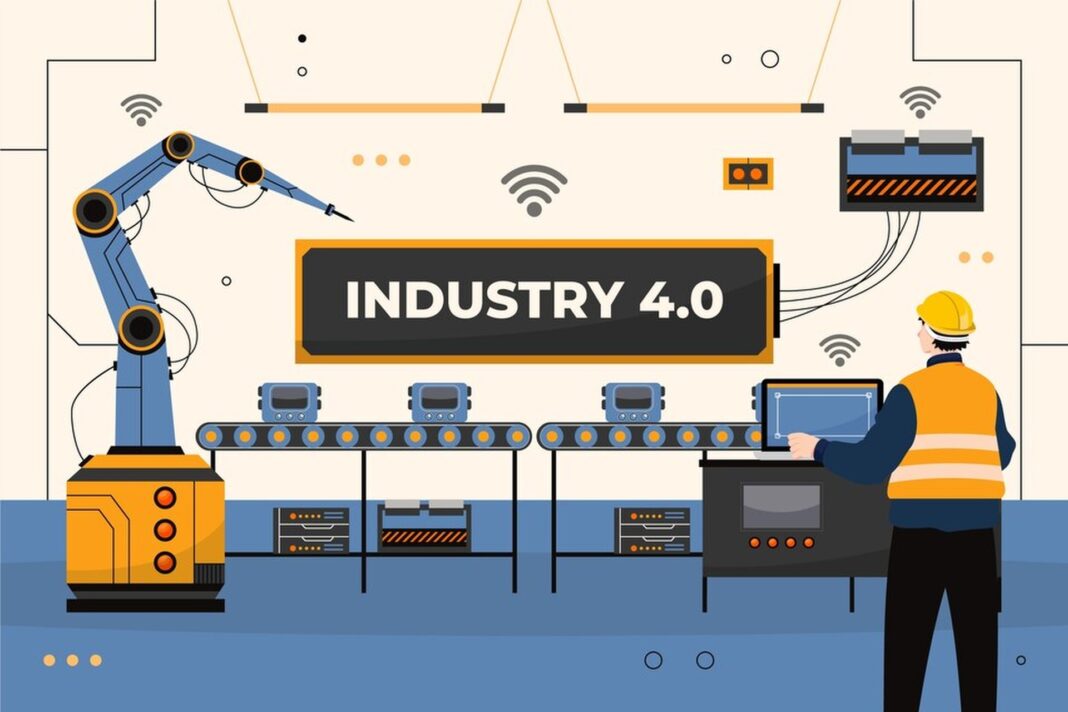Robotics is transforming heavy industries. This change is driven by safety and efficiency. Heavy industries use advanced technology. This change boosts productivity and lowers labor hazards. Companies that invest in robots produce more. Automating heavy engineering is increasingly common.
How Robotics Is Transforming Heavy Industry
Robots are transforming heavy industry. Operations are faster and more precise with automation. Robots may do dangerous activities. Welding assembly and material handling reap benefits. Robots reduce downtime by running continually. Production increases with this capacity.
Robots also assist organizations in maintaining quality. Adjusting programs for various tasks is simple. This adaptability meets heavy engineering diversified demands. Collaboration between people and machines improves results. Workers may concentrate on complicated things while robots do monotonous chores.
Career happiness generally increases with teamwork. Companies are streamlining processes like none before. Robotic system remote monitoring gives real time data. This data aids strategic decision making. Industries are saving money and improving safety. Robotics will grow as industries adapt. Many firms are using this technology to compete.
Key Benefits Of Robotics In Heavy Engineering
Robotics in heavy engineering has various benefits. Operating efficiency may be greatly improved with robotics. Humans operate slower than robots. They can do repeated chores without tiring. Productivity rises dramatically.
Additionally robots reduce human mistakes. This boosts product quality. Companies may reduce labor and training expenditures over time. The initial investment usually pays off soon in savings and production. Key benefits include safety. Robots do dangerous duties lowering workplace accidents.
Thus worker injury risk decreases. As companies seek sustainability robots reduce waste. Processes may be optimized for less resources. Automation also improves data tracking. Companies may analyze performance using this data. Continuous monitoring improves processes. All these benefits make robots a smart investment for heavy engineering organizations. In competitive marketplaces keeping ahead matters. Robotics using companies may drive innovation and growth.
Case Studies Successful Robotics Implementations
Successful robotics deployments show their potential. Industry outcomes are impressive internationally. One example is the car industry. Major manufacturers use robots in assembly lines. This integration simplified manufacturing. Robots do painting and welding. Quality and production rise.
Another example is shipbuilding. Companies use robots for hull assembly and inspection. Manufacturing speeds up dramatically with this usage. Construction robots are also growing. Sites are surveyed and monitored using drones. They inform project planning with useful data.
Furthermore mining has used autonomous cars. Vehicles reduce human presence in unsafe situations improving safety. Each case study shows concrete advantages. Robotics pays off for companies. They get a competitive edge. The good effect of robots inspires others. As the industry learns from these examples, implementations may increase.
The Role Of Ai In Enhancing Robotics
AI is transforming the robotics sector. Smarter operations improve robots. AI helps robots adapt by evaluating massive data sets. Their experiences may help them better. This function greatly improves robotic system efficiency. AI powered robots can self diagnose faults. They can adapt to varied jobs. Their adaptability makes them appropriate for many applications. In heavy engineering AI optimizes machine performance.
Predictive maintenance becomes feasible. AI reduces downtime by predicting problems. In addition, robots can cooperate well with humans. They may mimic human behavior to complete tasks. AI powered robots improve safety. They can immediately identify and address dangers. Hazardous situations are safer with this capacity. As AI advances so will robots. The integration of AI with robots is new. This partnership will transform heavy engineering.
Challenges In Integrating Robotics
Robotics has numerous advantages but obstacles remain. Integration is difficult for industries. Startup expenses for robotic systems might be substantial. This investment may inhibit smaller firms. Another problem is training people to work with robots. Workers may require new skills. Change resistance may also slow development. Employees may worry about job loss or new tech. Robotics integration into existing processes is also difficult.
Planning for system compatibility is necessary. Robotic system dependability is essential. Failures may interrupt operations. Also required is continual maintenance and support. Companies must guarantee robots can adapt to changing needs. Successful planning and investment may overcome many obstacles. Clear communication and thorough training are key. Industrial robotics integration may be achieved by solving these difficulties.
Future Innovations In Heavy Engineering Robotics
The future of heavy engineering robots is promising. Technological advances offer interesting improvements. Robotics will progressively become autonomous. Businesses are funding cobots. These robots function securely with people. AI improvements will let robots do difficult jobs. Improved machine learning will aid decision making.
Mobile robots are another expected advance. Mobile robots deliver and check items independently. Site surveys and monitoring are using drones more. This enables real time data collection. Blockchain technology may also help. Data and process security boosts efficiency. The trends favor networked systems. Robotics will merge with IoT.
Connectivity generates a data rich environment. Businesses may use this data for predictive analytics. They can see trends and adapt operations. Sustainability will also drive robotics innovation. More efficient operations save energy and waste. The potential for heavy engineering robots is endless. Industries will adapt and expand as technology improves.
What Are The Initial Costs Of Implementing Robotics?
Initial robotics expenses might be high. Technology greatly affects costs. Robotic system complexity and application are factors. Some robotic arms cost tens of thousands. AI enabled robots are more expensive. Software installation and training cost extra. Integrating robots into infrastructure is expensive. A company must also consider long term support. Total investment might be intimidating. Many firms find this investment profitable. Efficiency and production may be greatly boosted.
Can Robotics Reduce Environmental Impact In Heavy Industries?
Robotics may drastically minimize environmental consequences. Automation makes procedures more accurate, reducing waste. Robotics reduces energy use by optimizing resources. Production emissions may be reduced via efficiency. Robots also monitor the surroundings. Real time data collection lets organizations adapt operations.
This monitoring assures environmental compliance. Robots also facilitate recycling and garbage management. They identify reusable materials. Multiple businesses are prioritizing environmental sustainability. As technology progresses robots will be crucial. Environmental protection supports global sustainability objectives.



